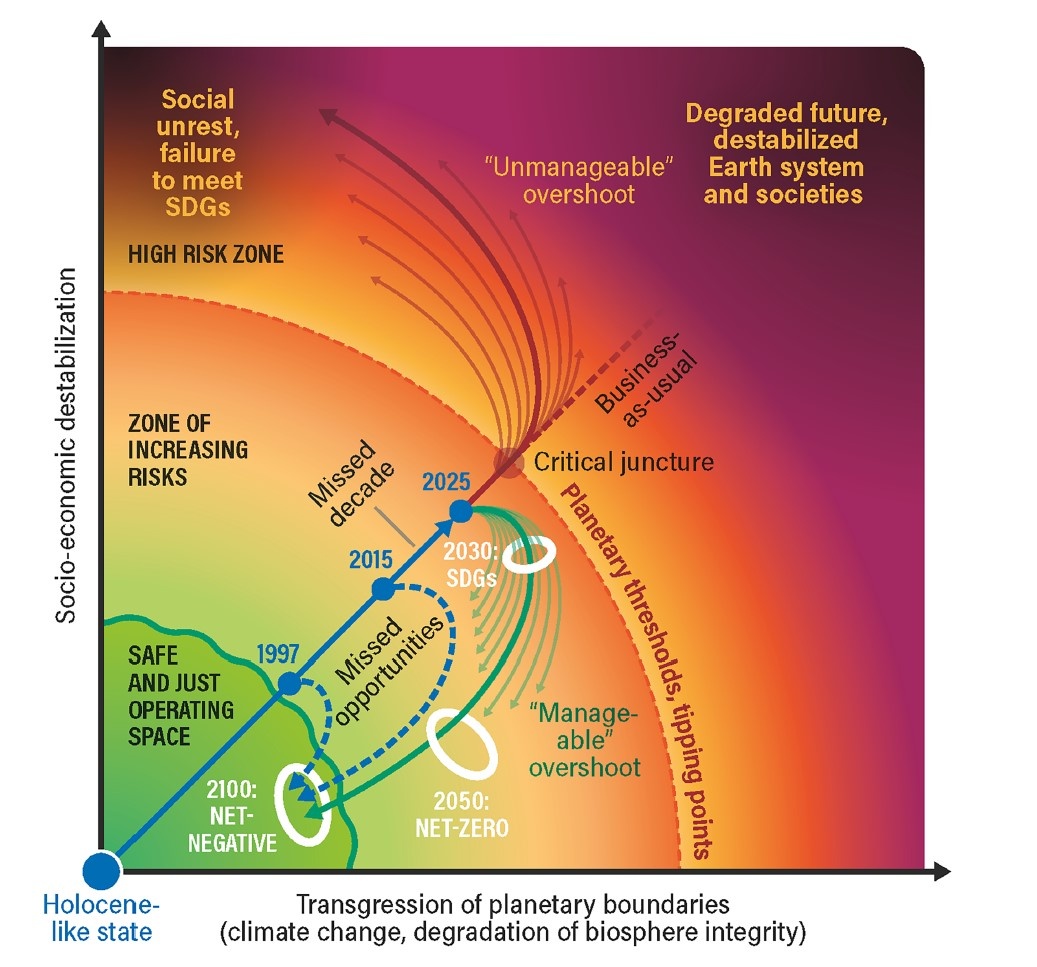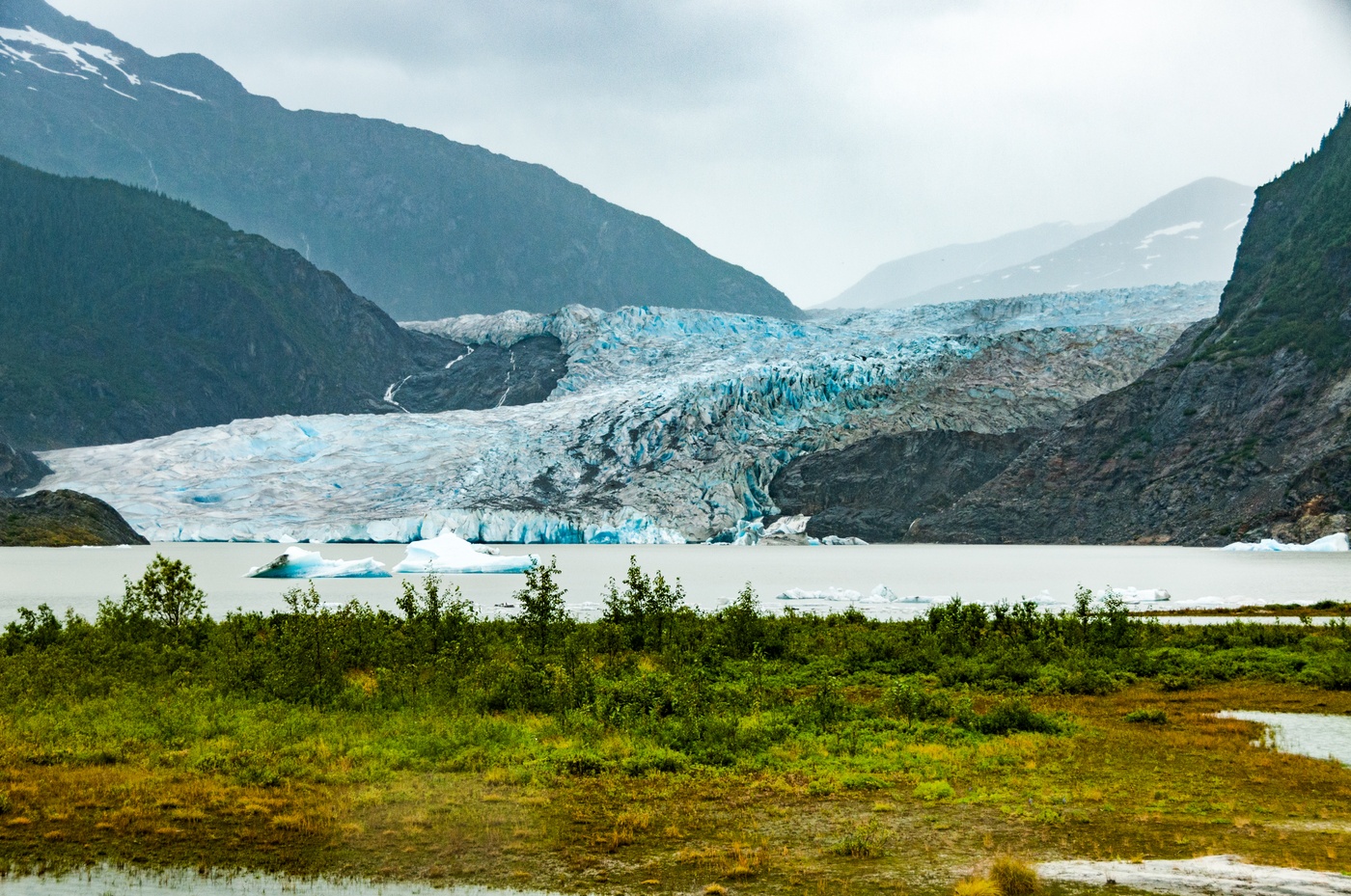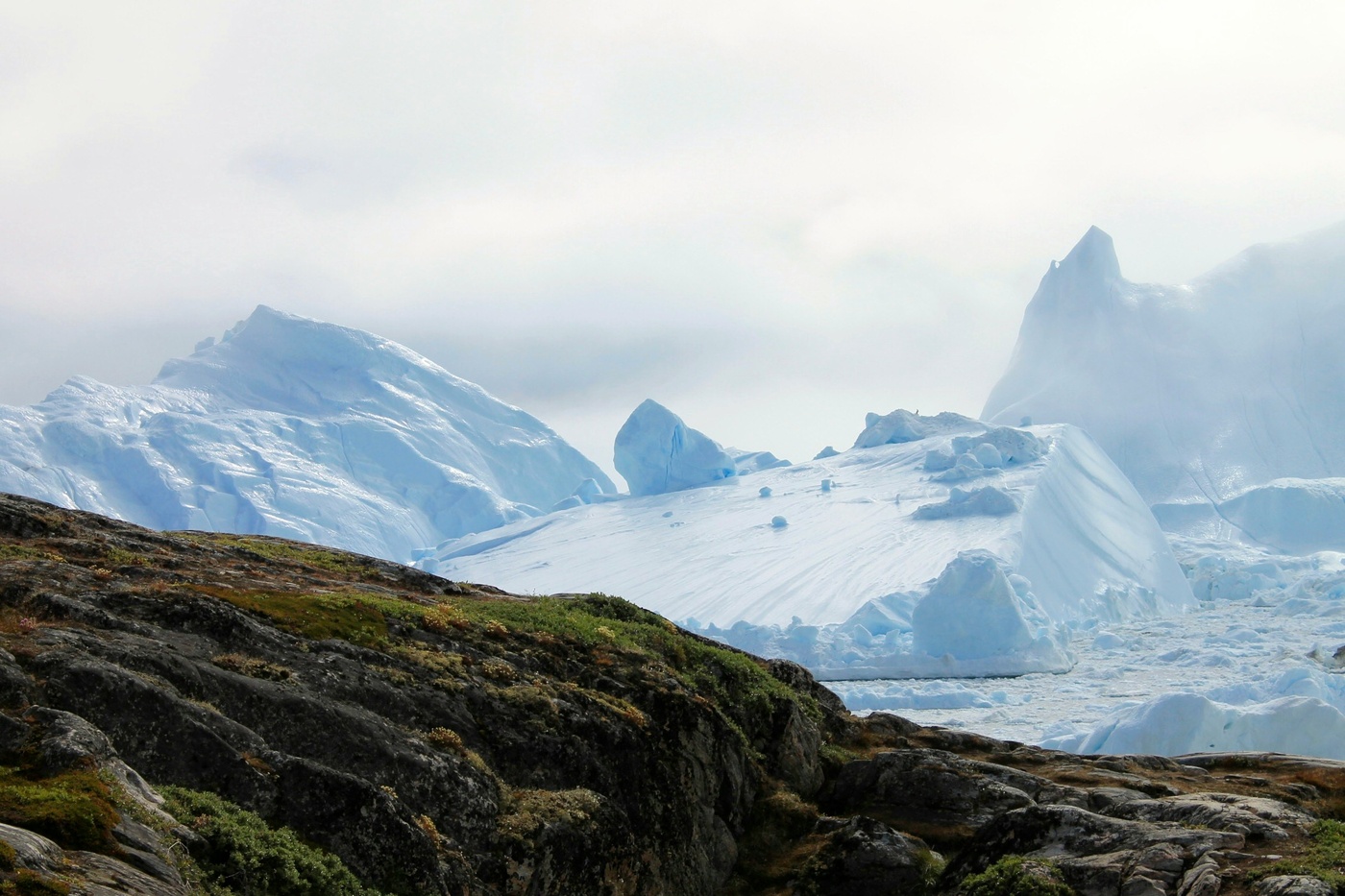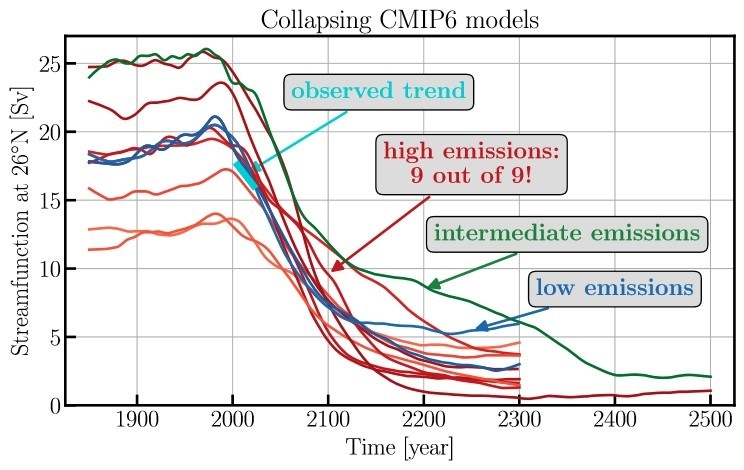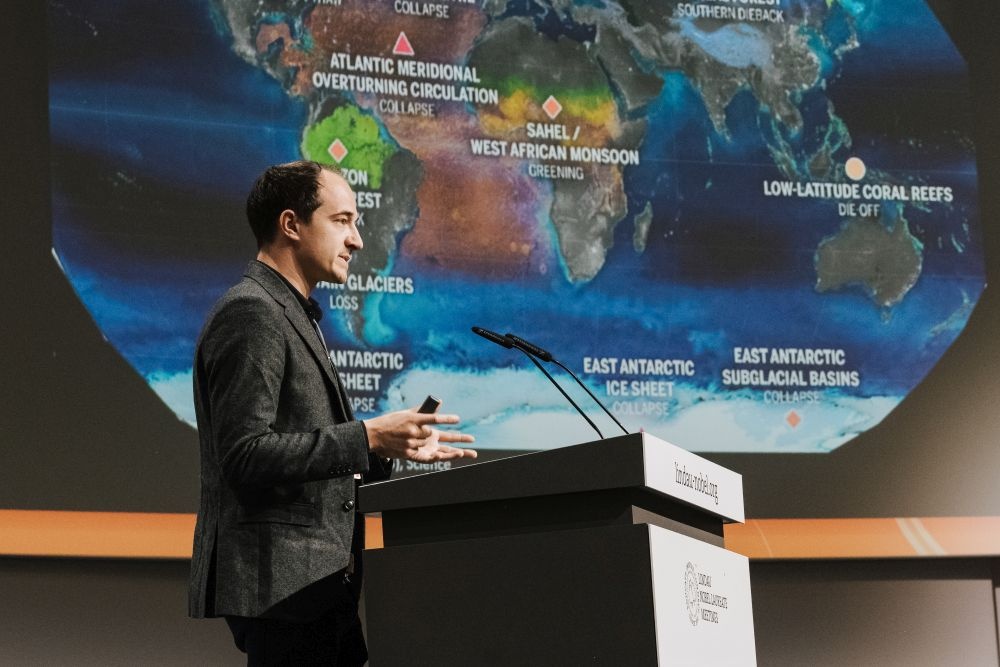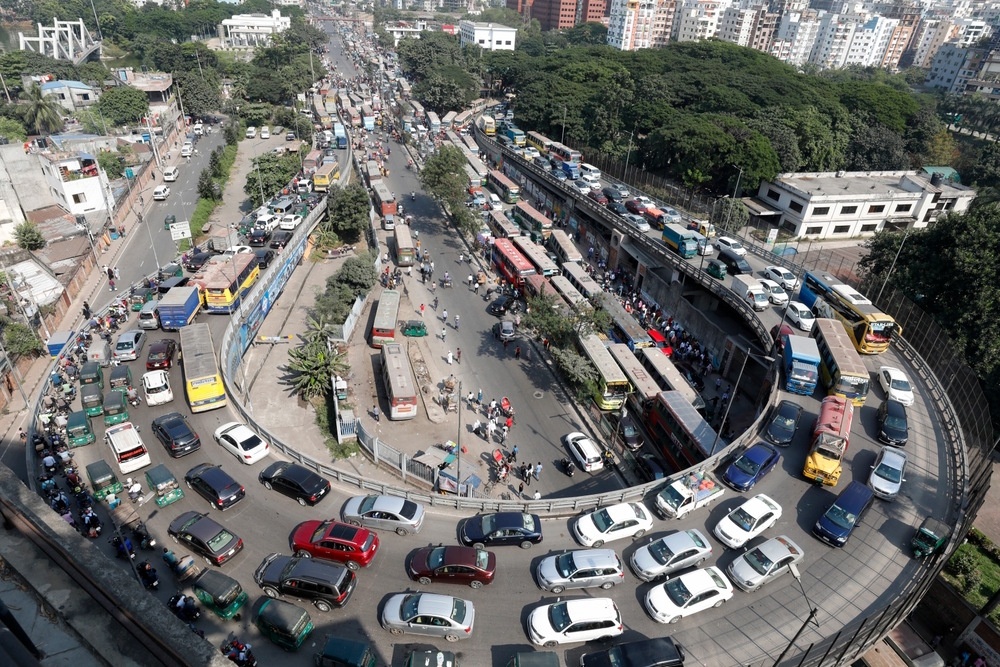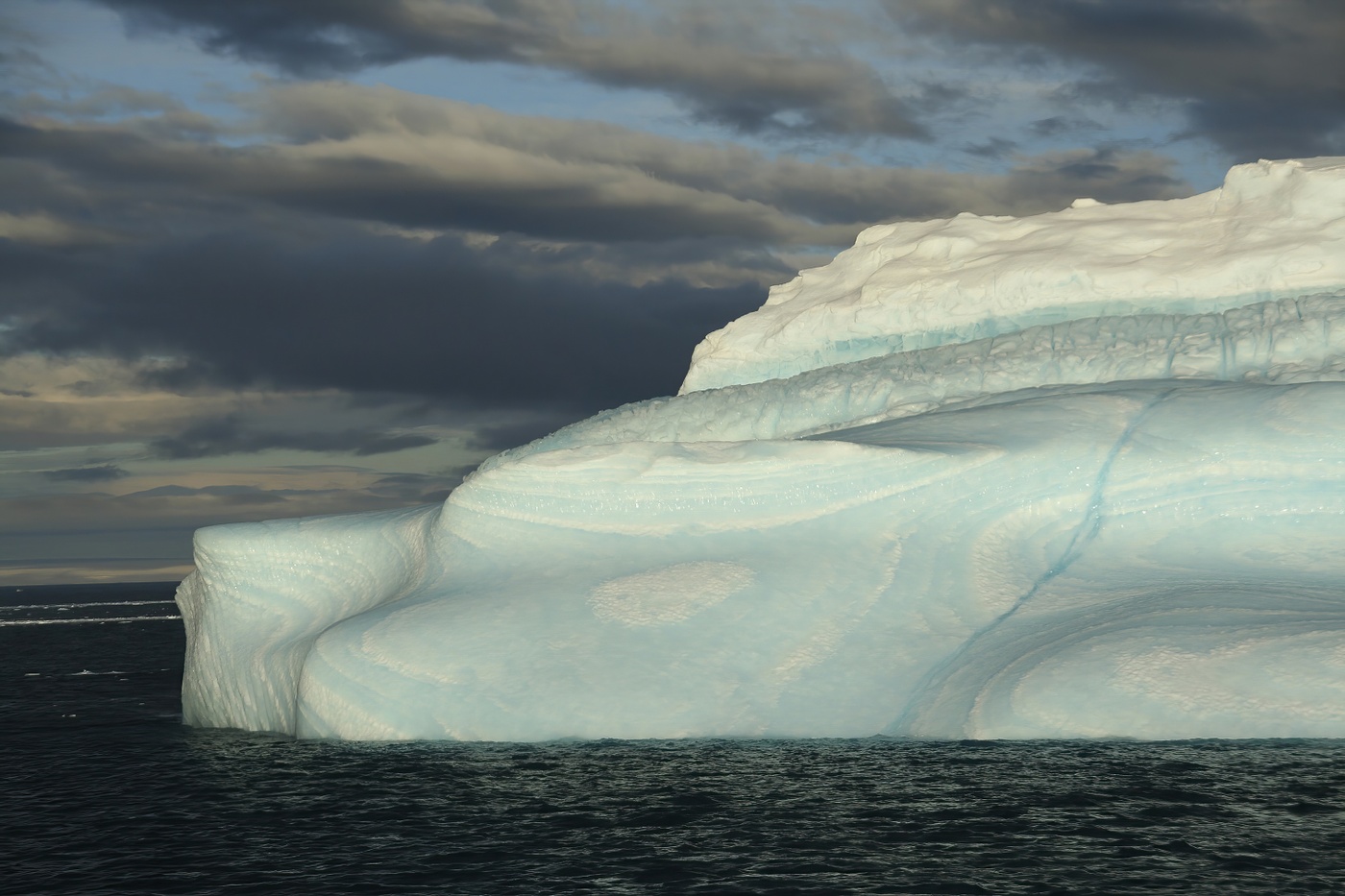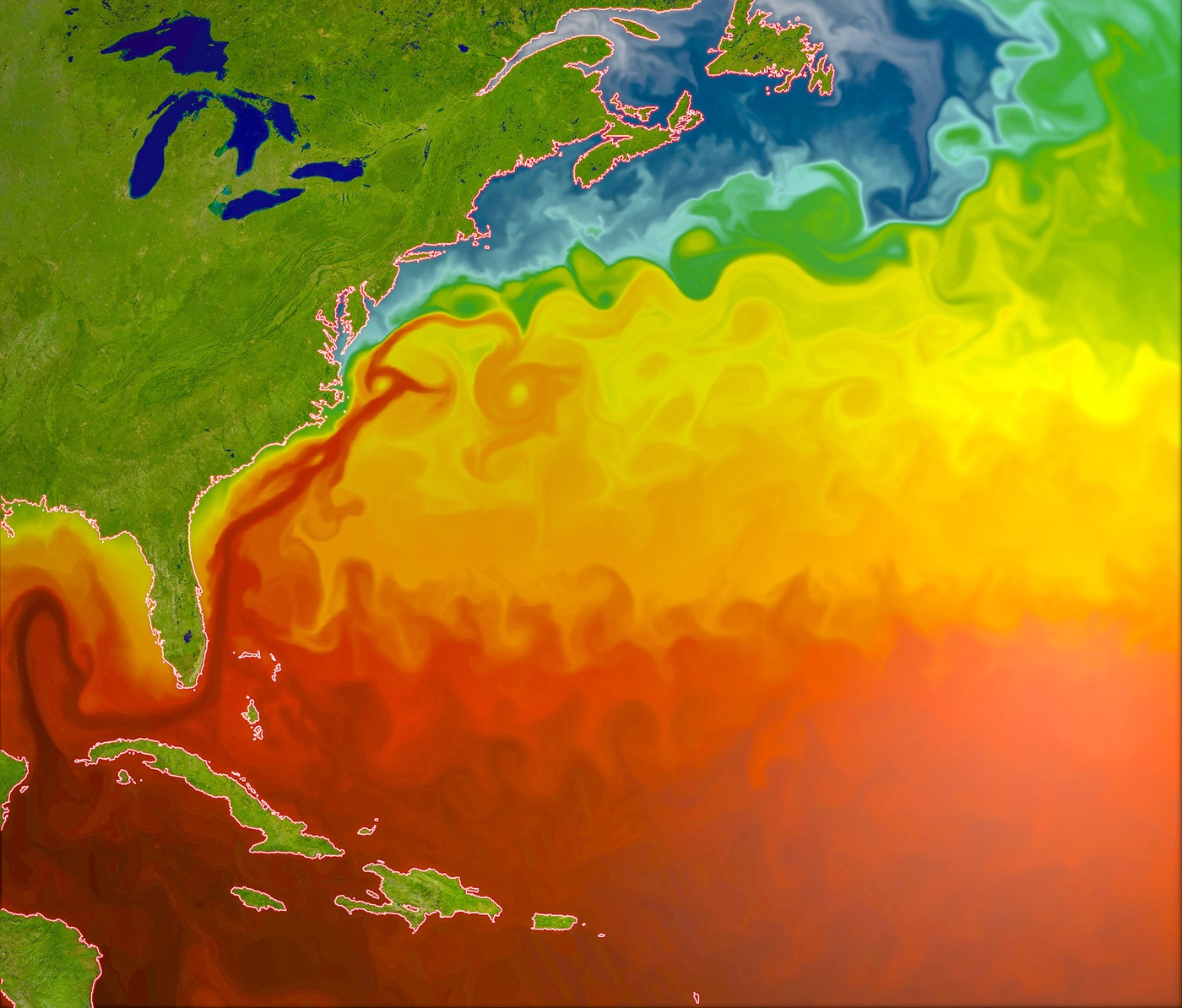Climate tipping elements are critical, large-scale components of the Earth system, which are characterized by a threshold behaviour. These systems appear to remain stable with increasing global temperature, but starting at a particular global temperature threshold, very small additional disturbances can 'tip' them into a qualitatively new state. If you imagine a valuable vase that initially remains standing while the table is being tilted. At first nothing happens; then the slightest vibration is enough for it to tip over.
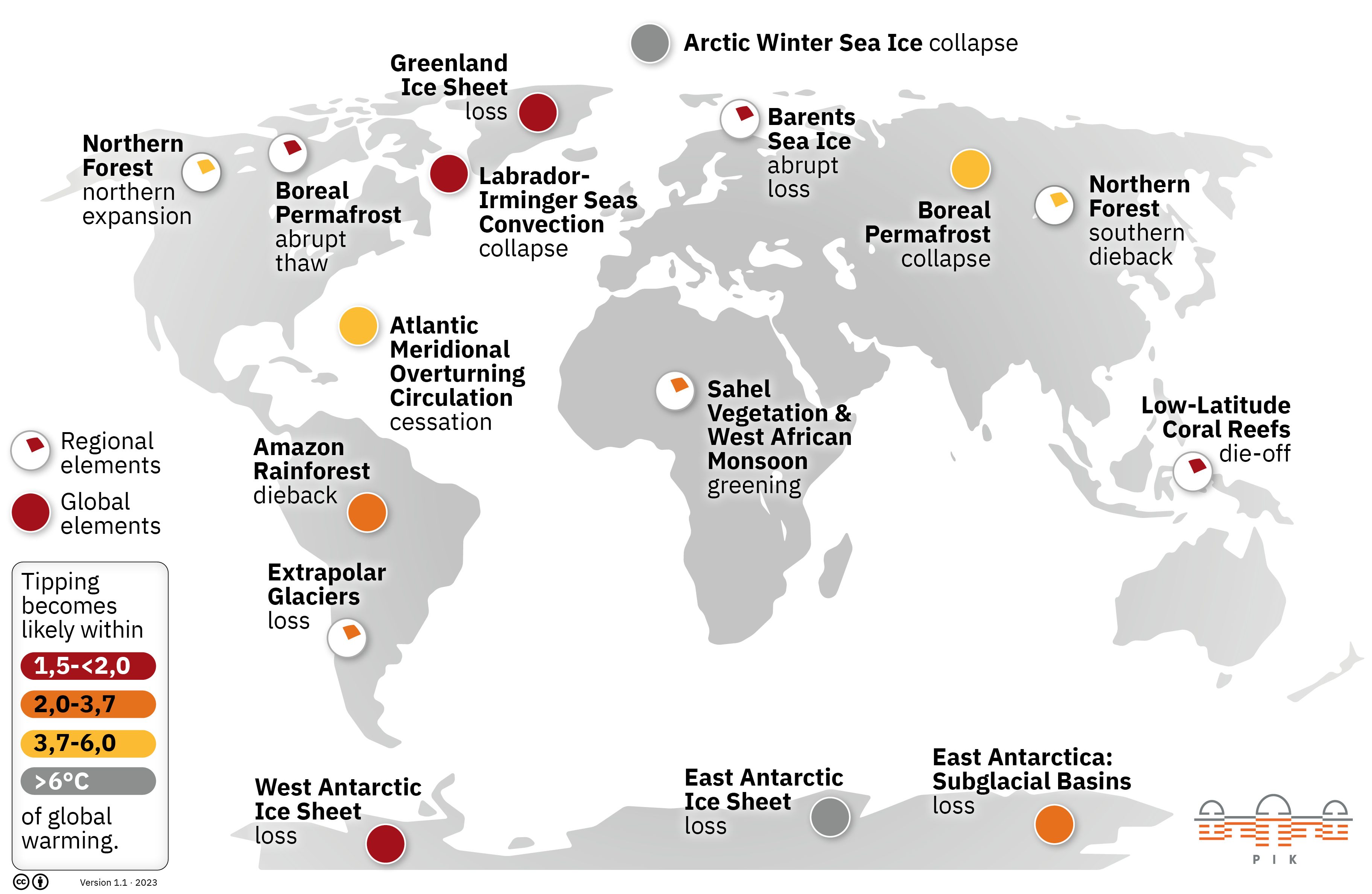
The geographical distribution of global and regional tipping elements, color-coded according to the best estimate for their temperature thresholds, beyond which the element would likely be 'tipped'. Figure designed at PIK (under cc-by licence), based on Armstrong McKay et al., Science (2022).
The threshold behavior is often based on self-reinforcing processes which, once tipped, can continue without further external forcing. It is thus possible that a component of the Earth system remains ‘tipped’, even if the background climate falls back below the threshold. The transition resulting from the exceedance of a system-specific tipping point can be either abrupt or gradual. Crossing single tipping points has severe impacts on the environment and threatens the livelihood of many people1. There is also the risk that, through feedback loops, further tipping points in the Earth System are reached and a domino-like chain reaction is initiated2,3.
Since the first publications in 2007/20084,5, scientific knowledge about tipping elements has greatly improved – and it is still a highly-active field of research. For example, the University of Exeter and the Potsdam Institute for Climate Impact Research (PIK) have signed an agreement to jointly investigate climate change tipping points - a first output is there: the Global Tipping Points Report. Also, a project is being prepared to compare computer-model output with respect to tipping points : TipMIP, a „TIPping point Model Intercomparison Project“. A general note: In research, new studies complement older ones. The exact number of tipping elements reported, for example, often simply depends on details in the definition of a tipping element, or on the focus of a study (see also Developments in tipping elements science).
PIK News and Publications about Tipping Elements
The most recent science
Below each tipping element is briefly profiled and the most recent research summarised – based on a 2022 updated tipping element review by an international group of scientists (from Exeter University, Stockholm Resilience Center, Future Earth and the Potsdam Institute for Climate Impact Research)6.
Click to expand the grey bars and learn more about individual tipping elements (for instance about the tipping process, timescales and impacts of tipping). All stated temperatures refer to warming with respect to preindustrial levels. The temperature threshold is the global mean temperature increase at which the tipping element is likely to be tipped. In brackets we provide the range of global mean temperature increase at which it is possible for the tipping element to be tipped, e.g. 3°C (2°-4°C).
Armstrong McKay et al. (Science, 2022) identify:
|
|
|---|---|
| Core tipping elements of the Earth System | |
| Regional tipping elements | |
| The flashlights indicate how close the threshold for likely tipping is to the global warming already observed today. Current observations put average global warming at 1.2°C and increasing. | |
| Likely tipping in the range of the Paris Agreement (1.5 to <2°C) | |
| Within the range of current climate policies (up to 3.7°C) | |
| Up to 6°C | |
| Above 6°C | |
|
The consensus symbols indicate the confidence level that the authors of Armstrong McKay et al. have assigned to each threshold value, based on their assessment of the number and agreement of studies available. |
|
| High confidence in the value of the temperature threshold | |
| Medium confidence | |
| Low confidence | |
 Ice Masses (cryosphere entities)
Ice Masses (cryosphere entities)
When ice melts it exposes a generally darker underlying surface, whether the rocky bed of a glacier or the sea. This darker surface absorbs more radiation from the sun, in turn accelerating the melting of the remaining ice. This mechanism, known as the ice-albedo feedback, is a classic example of a self-reinforcing process where the same phenomenon, namely ice loss, is both the driver and the result of temperature rise. However, this is not the only mechanism (described below) that makes the Earth's large ice masses a tipping element.
What and Where?
Greenland is covered by an up to three kilometer thick ice sheet – all year around.
Tipping Point & Tipping Process
Loss: The Greenland ice loss due to glacier flow into the sea and enhanced melting during summer has considerably increased in recent years due to global warming. As a consequence, the ice sheet is becoming thinner and thereby losing height. This means that its surface, which today still reaches into high, cold air layers, is increasingly exposed to lower and warmer layers of air, which accelerates the melting process.
Temperature Threshold & Timescales
There are indications that the tipping point, leading to a long-term (10 000 years) complete ice loss, is likely reached at global warming levels of 1.5°C (possibly between 0.8°C and 3°C). The more that threshold is transgressed, the faster the tipping process can unfold (but at least 1000 years; the maximum estimate is 15 000 years).
Impacts of Tipping
Complete loss of the ice sheet would lead to world-wide sea-level rise of up to seven meters, and other tipping elements (particularly the Atlantic Meridional Overturning Circulation) would be affected.
What and Where?
The Arctic ocean is – to a large extent – covered by a floating cover of frozen ocean water, called sea ice. The extent of the ice cover depends on the season. This tipping element is the winter sea-ice cover, which never exceeds a thickness of a few meters. [Sea ice is not to be confused with table icebergs, which can be several hundreds of meters thick. They are pieces of former ice shelves, which are the floating end of land-based glaciers. It should also not be confused with the summer sea-ice cover, which has already been diminished to such an extent that the North Pole is likely to be ice free in summer within this century.]
Tipping Point & Tipping Process
Collapse : Several computer model simulations show that shifts in the timing of sea-ice growth and melt causes exhibit threshold behaviour.
Temperature Thresholds & Timescales
The threshold that can be identified from the models lies at approximately 6.3°C (4.5-8.7°C), and the duration of the tipping process is estimated at 20 years (10-100 years).
Impacts of Tipping
The sea ice cover in winter and summer are strongly dependent on one another. An uncovered ocean surface contributes through several processes to warming in the northern latitudes that is twice as large as the global average. Overall, this feedback could lead to an increase in global warming of 0.6°C.
What and Where?
The winter sea ice in the Barents Sea (between Scandinavia, the island of Svalbard and Nowaja Semlja) is a special case in comparison with the rest of the Arctic Sea ice.
Tipping Point & Tipping Process
Abrupt loss: Loss of Barents sea ice is self reinforced due to increased inflow of warm water from the Atlantic.
Temperature Thresholds & Timescales
Two models show an abrupt loss at 1.6°C (1.5-1.7°C), with a potential timescale of about 25 years.
Impacts of Tipping
Among the consequences of sea-ice loss in the Barents Sea are a significant impact on atmospheric circulation, the climate in Europe as well as potential impacts on the Atlantic Meridional Overturning Circulation.
What and Where?
Around a thousand billion tons of carbon are estimated to be stored in the upper three meters of the frozen soil.
Tipping Point & Tipping Process
Abrupt Thaw: Degradation of the surface layer exposes deeper soil layers to thawing and decomposition and therefore accelerates thermokarst formation. Although this is a local process, it could be triggered almost synchronously at sub-continental scale.
Temperature Thresholds & Timescales
The temperature threshold for this kind of tipping is estimated to be 1.5°C (1-2.3°C), with a timescale of 200 years (100-300 years).
Impacts of Tipping
Abrupt thaw could, in comparison to gradual thaw, increase carbon emissions from permafrost soils by 50-100%, and could potentially trigger large-scale boreal permafrost collapse (see below). In any case, thawing permafrost would contribute considerably to global warming and therefore to the associated risks, from extreme weather to sea-level rise.
What and Where?
The arctic permafrost, which has been frozen for centuries or even millennia, is located in Siberia and North America. These 'Yedoma soils' lie over three meters beneath the surface and are thought to contain many additional billions of tonnes of carbon. If it were to thaw, it would potentially release large amounts of the greenhouse gases carbon dioxide and methane.
Tipping Point & Tipping Process
Collapse : These gas compounds originate from organic material which was stored during the last Ice Age. The heat caused by microbial decomposition of the carbon compound accelerates thawing and degradation of the soil.
Temperature Thresholds & Timescales
A threshold could be reached at about 4°C (3-6°C) according to the (relatively few) estimates. The timescale for tipping is 50 years (10-300 years).
Impacts of Tipping
The released carbon compounds could lead to additional global warming of 0.2-0.4°C.
What and Where?
Extrapolar glaciers are all glaciers are not located in Greenland or Antarctica. Often referred to as 'alpine glaciers', they usually have specific local properties.
Tipping Point & Tipping Process
Loss: However, there are signs that certain temperature thresholds can mark simultaneous glacier loss across large areas. The European glaciers are the most sensitive ones, and the relatively more robust are those in high alpine regions of Asia.
Temperature Thresholds & Timescales
A global estimate for the temperature threshold is 2°C (1.5-3°C), and for the duration of the process 200 years (50-1 000 years).
Impacts of Tipping
Freshwater supply strongly depends on reliable and continuous meltwater from glaciers in many regions of the world. If the glaciers disappear, many communities will be subject to water shortages.
What and Where?
Large parts of the base of the towering West Antarctic ice sheet rest on the continental bedrock below sea level. Moving inland, this bedrock falls away, reaching a depth of 2.5km below sea level - the ice sheet, however, is high enough to still reach above sea level.
Tipping Point & Tipping Process
Loss: Due to this topography, the West Antarctic ice sheet can be destabilized by particular flow dynamics. The destabilisation is triggered when the ice retreats beyond a certain point, for example as a result of warming ocean temperatures. A self-perpetuating feedback kicks in, causing accelerated ice loss.
Temperature Thresholds & Timescales
The threshold for tipping is estimated at 1.5°C (1-3°C) global mean temperature rise. The timescale for a collapse is estimated at 2 000 years (500 years if the threshold is strongly exceeded, with a maximum of 13 000 years).
Impacts of Tipping
If the ice sheet were to break up, sea level would rise worldwide by about three meters.
What and Where?
There are some sub-glacial basins in East Antarctica that, like the West Antarctic ice sheet, are grounded below sea level. These include the Wilkes, Aurora und Recovery basins.
Tipping Point & Tipping Process
Loss: A self-perpetuating feedback can arise here as well.
Temperature Thresholds & Timescales
The temperature threshold for collapse is estimated at 3°C (2-6°C) and the process could happen within 2 000 years (500-10 000 years).
Impacts of Tipping
Another contribution to sea-level rise.
What and Where?
The East Antarctic ice sheet stores the biggest part of Earth’s frozen reservoir of freshwater.
Tipping Point & Tipping Process
Loss: While the East Antarctic ice sheet seems stable today, self-perpetuating feedbacks could kick in here as well, at very high temperatures.
Temperature Thresholds & Timescales
At warming of around 7.5°C (5-10°C) a tipping process could start leading to a complete loss of the East Antarctic ice sheet over more than 10 000 years.
Impacts of Tipping
Ice in East Antarctica corresponds to around 50 meters of sea-level rise.
 Circulation Systems
Circulation Systems
There are some prominent examples of atmospheric and ocean circulation with marked (but variable) annual or seasonal patterns – but these can change. Throughout the history of our planet’s climate, there have been multiple phases of disruption and re-organization. This section gives a brief outline of potentially abrupt changes in circulation systems which could occur in the future.
What and Where?
The overturning circulation of the Atlantic is like a huge conveyor belt, transporting warm surface water northwards and, after cooling and sinking in high latitudes, cold deep water southwards. It is called a 'thermohaline' circulation because it is driven by temperature differences and differences in salinity. The Gulf Stream, which is responsible for the mild climate of northwestern Europe, is part of this large-scale system of Atlantic currents.
Tipping Point & Tipping Process
Cessation: One of its main motors is the cold, dense (and therefore heavy) salt water which sinks near Greenland and the Labrador coast. If the amount of freshwater from melting ice in the northern latitudes increases, this deep water formation could cease, slowing down the circulation motor.
Temperature Thresholds & Timescales
Scientific evidence points to a temperature threshold of 4°C (1.4-8°C) with a timescale of 50 years (15-300 years).
Impacts of Tipping
There are severe impacts on temperature and precipitation patterns: warming of the southern hemisphere, a southward shift of the intertropical convergence zone, monsoon weakening in Africa and Asia, strengthening in the southern hemisphere leading to drying in the Sahel and in parts of the Amazon, and reduced natural carbon sinks. It can also lead to cooling in the North Atlantic - however, this does not result in a substantial reduction in global warming since the different processes interact in such a way that the resulting warming and cooling effects cannot simply be added together.
What and Where?
As part of the subpolar gyre in the North Atlantic, there is an overturning circulation in the Labrador-Irminger sea.
Tipping Point & Tipping Process
Collapse: Several models show a collapse of that overturning circulation as a consequence of global warming.
Temperature Thresholds & Timescales
The temperature threshold is estimated to lie at around 1.8°C (1.1-3.8°C), and the process could take place within 10 years (5-50 years).
Impacts of Tipping
The consequences of tipping are a regional cooling in the North Atlantic of around 2-3°C and potentially a global cooling of 0.5°C (however, this should not be understood as a potential mechanism for combatting global warming). Furthermore, a northern shift of the jet stream is expected, as are weather extremes in Europe and a southward shift of the intertropical convergence zone.
 Ecosystems (biosphere components)
Ecosystems (biosphere components)
The living part of the Earth system, called the biosphere, plays a decisive role for the climate, both locally and via difference feedback mechanisms also for the global climate. For example, drier, warmer climate conditions can lead to vegetation die back, which releases additional carbon back into the atmosphere, resulting in increased carbon dioxide in the atmosphere and thus further fuelling climate change. When global warming crosses a temperature threshold, a tipping point, ecosystems can experience irreversible change.
What and Where?
The coniferous forests of the northern regions (taiga) - experts often call them 'boreal' forests - represent almost a third of the global forest area. They are located circularly around the Arctic. This tipping element exhibits two tipping processes: southern dieback and northern expansion (see below).
Tipping Point & Tipping Process
Southern dieback: Boreal forests can be destabilized over larger areas (~100km) at their southern periphery, as a consequence of warming-induced hydrological changes, more frequent fires and bark beetle outbreaks.
Temperature Thresholds & Timescales
The best estimate of a threshold is 4°C (1.4-5°C) with timescales of 100 years (at least 50 years).
Impacts of Tipping
The forests are replaced by grass-dominated steppe/prairie. The released carbon and the altered environment could contribute to an additional global warming of about 0.2 °C.
What and Where?
The coniferous forests of the northernregions (taiga) - referred to by scientists as 'boreal forests' - represent almost a third of the global forest area. They are located circularly around the Arctic. This tipping element exhibits two tipping processes: southern dieback (see above) and northern expansion.
Tipping Point & Tipping Process
Northern expansion: The forests can, due to warming, expand abruptly at their northern periphery, and thereby cover usually very bright and reflecting snow surfaces – accelerating arctic warming. Dark surfaces absorb more energy, light surfaces reflect more sunlight.
Temperature Thresholds & Timescales
A precise threshold is not reliably constrained yet. The best estimate is 4°C (1.5-7.2°C), with a timescale of 100 years (at least 40 years).
Impacts of Tipping
On the one hand, more CO2 is taken up by an increase of vegetation. On the other hand, the surface darkens, such that all in all global warming would be enhanced.
What and Where?
Tropical and subtropical coral reefs are among the ecosystems with the highest biodiversity worldwide. They have an enormous influence on the marine food web, nutrient an carbon cycles in the ocean and are essential for the well-being of millions of people worldwide. For example, they provide coastal protection and are important for tourism.
Tipping Point & Tipping Process
Die-off: Coral reefs are threatened by a multitude of human impacts, among them overfishing, direct damages, sedimentation and ocean acidification. However, when water temperatures cross a certain threshold, corals repel their symbiotic algea, leading to bleaching and then to dieoff of the corals.
Temperature Thresholds & Timescales
The threshold for widespread die-off is estimated at 1.5°C (1-2°C). The process could happen over the course of a decade.
Impacts of Tipping
All of the above mentioned ecosystem services of coral reefs vanish with die-off.
What and Where?
The West African monsoon and the vegetation in Sahel are closely connected, allowing for greening of the Sahel.
Tipping Point & Tipping Process
Greening: There are many known self-reinforcing processes. In particular, dust and aerosols influence rainfall patterns. Increasing rainfall leads to increased vegetation and vice versa.
Temperature Thresholds & Timescales
It is not entirely clear if indeed tipping will take place, but there are hints pointing towards several abrupt changes in the past, known weaknesses in models that fail to reproduce expected tipping behavior and enormous regional consequences. Therefore, the authors of Armstrong McKay et al., define this process as tipping point, with a threshold of 2.8°C (2-3.5°C), and a timescale of 50 years (10-500 years).
Impacts of Tipping
A fundamental change in regional vegetation.
What and Where?
The Amazon rainforest in South America is an element of the biosphere, which due to the water and carbon cycles plays an important role in the entire Earth System.
Tipping Point & Tipping Process
Dieback: A large part of the rainfall in the Amazon basin originates from water evaporating over the rainforest. A warmer global climate with declining regional precipitation in combination with deforestation and forest fire could push the rainforest towards a critical threshold.
Temperature Thresholds & Timescales
The best estimate currently available from partially unclear scientific consensus is around 3.5°C (2-6°C) – but without the influence of deforestation. The timescale for die-back could lie around 100 years (50-200 years).
Impacts of Tipping
A transformation of the Amazon rainforest into a seasonal forest, adapted to drier conditions, or to grassland, would have fundamental impacts on global climate, since around 25% of the global atmosphere-biosphere carbon-exchange takes place here.
 Developments in tipping elements science
Developments in tipping elements science
Tipping element research has made enormous advances since its beginnings in the 2000s. Some proposed tipping elements, depending on not always consistent definitions, have been rejected in the meantime – or are so uncertain that they no longer appear in the list above.
Uncertain: Shift of Indian summer monsoon; Increase or loss of sea ice in the southern Ocean; Break-up of stratocumulus clouds near in equatorial latitudes; Collapse of Antarctic Bottom Water formation, Increase of Indian Ocean upwelling; Loss of tibetean snowfields; Global anoxia in the ocean.
Rejected: Abrupt expansion of the Arctic ozone hole; Permanent/extreme El Niño; Instability of the northern polar jetstream.
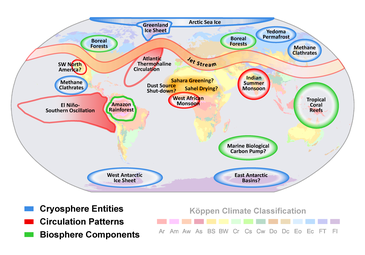
Outdated map of tipping elements in the earth system.
There are other possible tipping elements showing self-perpetuating processes, but they either have no threshold behavior or show only local, but no large-scale synchronized tipping. Among these are the gradual thaw of boreal permafrost, loss of Arctic summer sea ice, the weakening of the global carbon sink on land and in the ocean, the weakening of the biological ocean carbon pump and the dissolution of marine methane hydrates.

